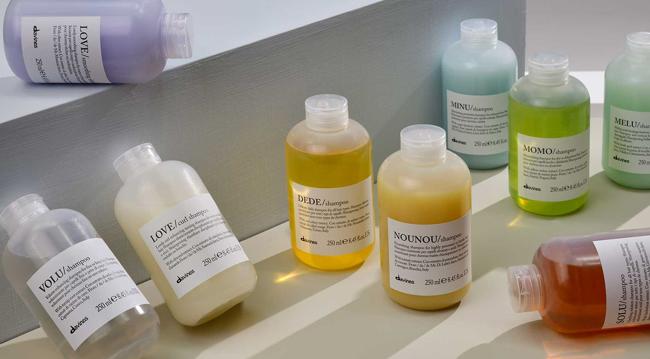Summary
Wallpaper* returns to Davines HQ in Parma, Italy, where a revolution in regenerative farming meets with the brands commitment to incredible haircare
Source: Wallpaper*

AI News Q&A (Free Content)
Q1: What are the key differences between organic cosmetics and conventional cosmetics in terms of ingredients and potential health benefits?
A1: Organic cosmetics are formulated using ingredients derived from organically farmed plants and exclude synthetic chemicals, parabens, and artificial fragrances commonly found in conventional cosmetics. Scientific research highlights that organic cosmetics tend to minimize exposure to potentially harmful substances and are less likely to cause skin irritation or allergies. Furthermore, these products often contain plant-based antioxidants, which can help protect skin from oxidative stress and environmental damage, providing an added layer of health benefits for users seeking safer skincare options.
Q2: How has Davines integrated regenerative farming practices into its organic haircare production, and what impact does this have on sustainability?
A2: Davines has adopted regenerative farming at its Parma headquarters, focusing on soil health, biodiversity, and carbon sequestration. By sourcing ingredients from regenerative farms, the company ensures its supply chain supports ecological restoration and sustainable land management. This approach reduces the brand's environmental footprint and promotes the use of renewable resources, aligning with global efforts to create a more sustainable cosmetics industry.
Q3: What are some common myths about organic cosmetics, and what does recent scientific evidence say about their effectiveness and safety?
A3: A prevalent myth is that organic cosmetics are always safer and more effective than their conventional counterparts. However, recent studies reveal that while organic cosmetics generally reduce exposure to synthetic chemicals, their efficacy depends on the specific active ingredients used. Phenolic compounds, for instance, are potent antioxidants found in some organic products and have demonstrated photoprotective and anti-inflammatory properties, but their prevalence in commercial products remains limited due to formulation challenges and cost barriers.
Q4: Which phenolic compounds are most prevalent in organic skincare products, and what roles do they play according to recent research?
A4: According to a 2025 study analyzing skincare products, key phenolic compounds such as bakuchiol, resveratrol, chrysin, and hesperidin methyl chalcone are prevalent in anti-aging products, while ferulic and caffeic acids are common in sunscreens and aftersun products. These compounds primarily function as antioxidants, scavenging reactive species to mitigate oxidative stress and protect against photo-induced skin aging. Some also absorb UV radiation, providing preventive benefits against solar-induced skin damage.
Q5: What are the environmental advantages of using plant-based microcapsules in cosmetic formulations, as proposed by recent scholarly research?
A5: A 2024 study introduced plant protein microcapsules for cosmetics, which are biodegradable (98% compared to cellulose) and meet international standards for microplastics in freshwater. These microcapsules can encapsulate both hydrophilic and hydrophobic ingredients, offering controlled release and digestibility comparable to pure pea protein. Their adoption could substantially reduce the environmental impact of synthetic polymers and microplastics often used in cosmetic delivery systems.
Q6: How do regulatory bodies and global standards define and enforce the use of organic ingredients in cosmetics?
A6: Regulatory standards for organic cosmetics vary globally but generally require a significant percentage of ingredients to be certified organic, prohibit the use of synthetic pesticides, GMOs, and certain chemical additives, and mandate transparent labeling. Organizations such as COSMOS and USDA Organic provide certification frameworks, ensuring that products meet stringent environmental, health, and ethical criteria before being labeled as organic.
Q7: What are the economic impacts of adopting organic and regenerative agricultural practices in the cosmetics industry?
A7: Integrating organic and regenerative agriculture in cosmetics production can result in higher raw material costs but offers long-term economic benefits through enhanced brand reputation, consumer trust, and market differentiation. Sustainable practices also mitigate risks associated with supply chain disruptions and regulatory changes, ultimately supporting business resilience and growth in a market increasingly driven by environmental and health-conscious consumers.
References:
- Phenolics as Active Ingredients in Skincare Products: A Myth or Reality? (2025) https://www.sciencedirect.com/science/article/pii/S1874391924000336
- Organic movement - Wikipedia https://en.wikipedia.org/wiki/Organic_movement
- Natura Siberica - Wikipedia https://en.wikipedia.org/wiki/Natura_Siberica





